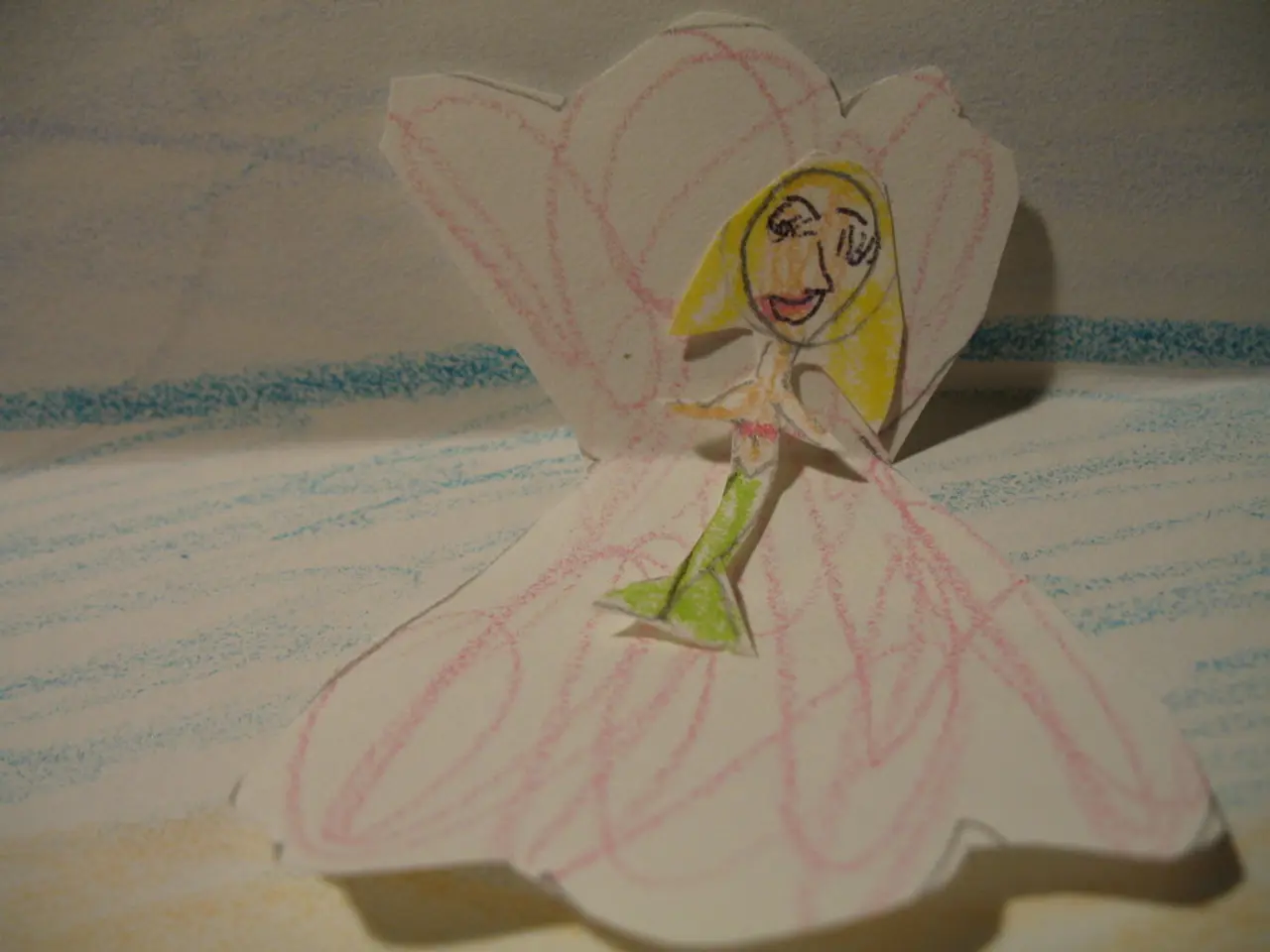Exploring the Art of Color Pencil Drawing: Delving into Color Theory Basics
Colored pencil drawing is a versatile art form that allows artists to produce detailed, vibrant, and richly textured works. Beyond the basics of layering and blending, there are several advanced techniques that can take your colored pencil artworks to the next level.
One such technique is burnishing, which involves applying heavy pressure with a light or colorless pencil to create a smooth, polished finish that blends and seals multiple underlying layers, enhancing richness and reducing visible paper texture.
Controlled layering with complementary or analogous colors is another approach that artists use to build complex hues and shadows. By layering light to dark tones using complementary colors rather than flat single hues, artists can produce realistic depth and avoid flatness.
Varying the pencil angle and pressure is essential for replicating surfaces like skin, fabric, or foliage textures. Lighter pressure keeps the paper receptive for more layers, while heavier pressure can saturate areas as needed.
Subtractive techniques, such as using a lighter pencil or eraser to push pigment aside after saturation, add highlights, remove unwanted areas, or create texture, especially effective on smooth drafting film or paper with tooth.
Textural stroke variation, like longer strokes for fur or hair, scumbling, cross-hatching, stippling, depending on the desired textures, are refined through layered applications.
Deliberate planning and focal point development are crucial for creating striking artworks. By planning compositions focusing on value contrast, artists can direct attention, build strong value hierarchies, and increase realism and visual impact.
Backgrounds and atmospheric effects can be enhanced through advanced blending and layering techniques for smooth gradients and realistic environmental details, adding sophistication to the artwork.
Handling your drawings with clean hands or wearing gloves helps avoid stains. Gel pens can highlight or add intricate patterns on darker areas. Choosing colors mindfully ensures a palette that complements your subject and theme.
Limiting pressure maintains smoothness and avoids tearing the paper. Pastels blending over color pencil layers adds soft textures and smooth transitions. Using repetitive patterns for textures like fur or wood adds authenticity.
Using soft, indirect lighting for display minimizes glare and fading. Blending unifies colors and gives artwork a polished appearance. Color theory helps understand how colors interact and the emotions they convey.
Varying your strokes helps create natural textures in your artwork. Colored pencil drawings can be created on a wide range of surfaces, from smooth paper to textured sketchbooks.
Overworking the paper can damage its texture and reduce the quality of your drawing. Pausing between layers prevents oversaturation and wear on the paper. Consider emphasizing reflective areas or contours to enhance depth.
Storing drawings in acid-free sleeves or folders prevents yellowing. Review your piece and make small adjustments for balance and contrast.
Essential supplies for beginners include high-quality color pencils, smooth or slightly textured paper, erasers, sharpeners, blending tools, fixative spray, and a good selection of colors. Acrylic paint can achieve bold, vibrant highlights or expressive backgrounds when combined with pencils.
Building multiple layers using light strokes creates richness and depth. Experimenting with tools like blending stumps, paper towels, or erasers enhances textures. Identifying the direction and strength of the light source before starting is essential for creating lifelike artwork.
Incorporating fine lines or intricate patterns adds realism to your drawing. Pressure and layering are essential for adjusting color intensity and texture, building depth, and creating richness in drawings. Magnifying tools help focus on intricate spots without straining your eyes.
Applying light layers preserves the paper's surface. Using darker tones makes objects stand out and feel realistic. Choosing a frame color and style that matches your artwork's mood and palette enhances its visual appeal.
Adding mixed media like watercolors, ink, pastels, gel pens, or acrylic paint can unleash creative possibilities. Using a fixative spray prevents smudging and locks in layers. Rotating displayed pieces periodically helps prevent fading and damage.
Framing your artwork with a frame featuring UV-protective glass helps protect fragile works. Limit bright colors to ensure visual harmony and avoid clutter.
By mastering these advanced techniques, you can create lifelike, vibrant, and richly textured colored pencil artworks that truly stand out.
In the realm of art, watercolor can be integrated with colored pencil drawing to produce even more complex and dynamic works, expanding the artist's repertoire of techniques and textures. To enhance one's education and self-development in this art form, learning various advanced techniques like burnishing, controlled layering, subtractive techniques, textural stroke variation, and deliberate planning can help artists create captivating and realistic drawings.




